As a food and lifestyle blogger, I tend to eat out frequently. Although I consider this a major plus to my job, I am bothered by the number of one-time-use containers I am constantly bringing home. I wanted to consider how to dine out in a more sustainable fashion and try to be eco-friendly as much as possible. Whether they are made of cardboard, plastic, styrofoam, or even a supposedly biodegradable material, the constant barrage of take-out containers is neither sustainable nor socially responsible.
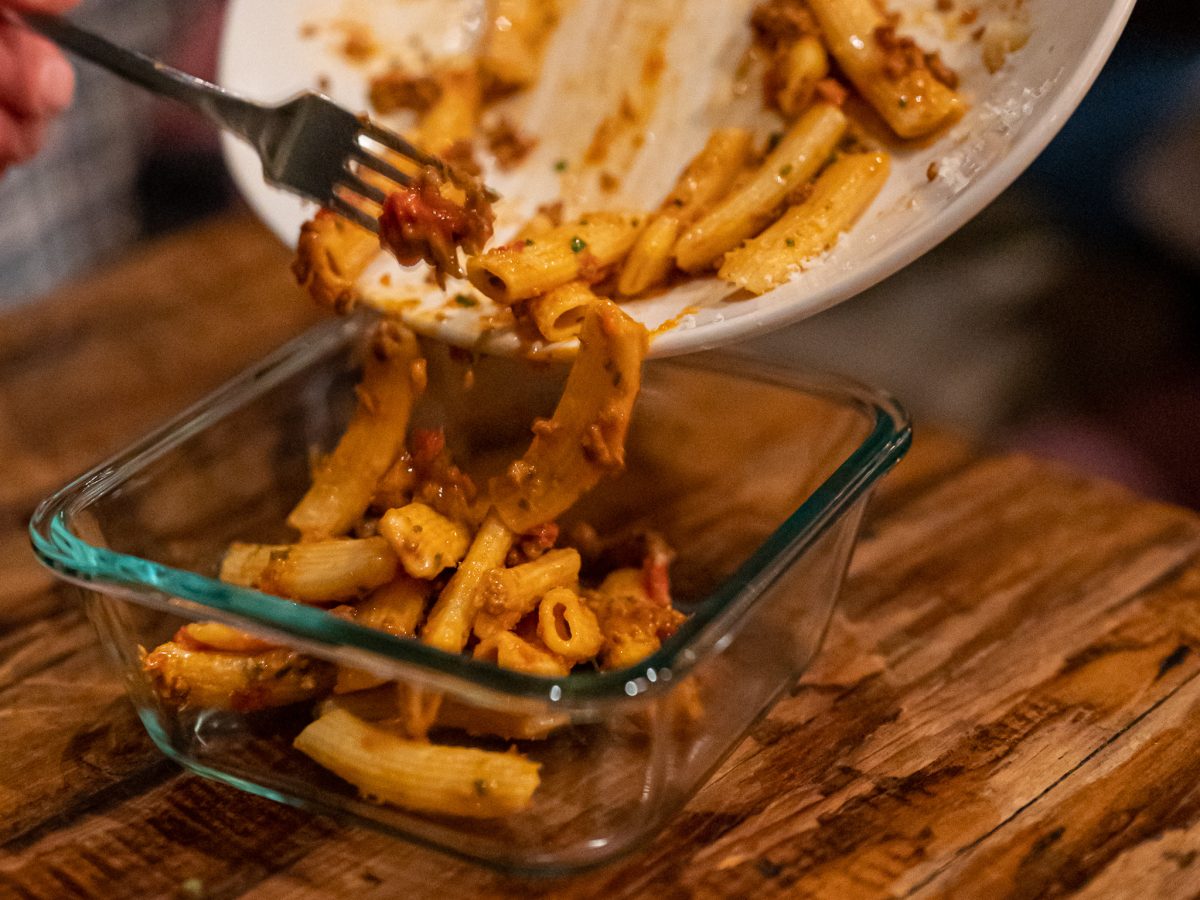
The problem with to-go containers is two-fold. One, these containers are far too large for my refrigerator and indoor trash can. Once I throw them out, they also fill up the big trash bin outside rather quickly. This problem is especially compounded as a food blogger, where it is not unheard of to bring home several entrées at once.
Two, even the containers marketed as compostable and biodegradable still require further processing at industrial facilities and are not very sustainable in the end. Knowing this, I’ve made a commitment to bring my own containers to restaurants for my future leftovers. I hope after reading this you are also inspired to make changes in your own habits when out at a fine dining restaurant. Bringing your own containers will reduce the amount of waste you produce and minimize your carbon footprint.
Table of Contents
In Good Health and Conscience
Most humans are full of microplastics because most of our food sources are full of microplastics. As it stands, there are minimal studies that demonstrate the long-term effects microplastics are having on us. Let’s just say, whatever the effects, we know they aren’t good.
Our to-go containers contribute to the overall problem of microplastics in the ocean and in our food, so it’s obvious to state that using less of them would be beneficial. When it comes to purchasing food containers, just stick to BPA-free plastics and glass.
This has become a great concern for many around the world. The managers at this steak restaurant understand the necessity of sustainable practices and have put into place a sustainability program. It is important for restaurants to prioritize eco-friendly practices and make efforts to reduce their environmental impact. This includes using biodegradable or compostable containers, reducing food waste, and sourcing ingredients from local and sustainable suppliers.
The Environment
Less than 10 percent of all plastic gets recycled. That recycling symbol on the bottom of containers is meaningless in most cases.
No matter which type of to-go container you are taking home with you, whether that’s an environmentally friendly compostable option or some contraption filled with styrofoam and lead, they will also use way more water than a reusable container you can rewash and reuse.
The waste that goes alongside any sort of single-use contraption is less than ideal, whether that’s paper straws, or anything else. The manufacturing process, emissions for logistics, transportation, and delivery to restaurants, are all contributors to what makes single-use so terrible.
Water Footprint
- 1 gallon: Paper cups
- 5 gallons: Cardboard to-go container
- 9.5 gallons: Styrofoam containers
Coffee to go cup water usage breakdown:
- 1 cup for one cup of coffee
- 10.5 cups for the plastic lid
- 23 cups for the paper cup and sleeve
Running a dishwasher uses on average 20 gallons of water. I counted the dishes in my dishwasher for a light load. It’s not hard to see washing these containers is an easy environmental win.
Some conventional studies seem to vary from 15 to 25 uses before there is a positive environmental impact if you are measuring water and energy use alone. This does not account for landfill space and breakdown emissions.
Practicality: Reusable To-Go Containers
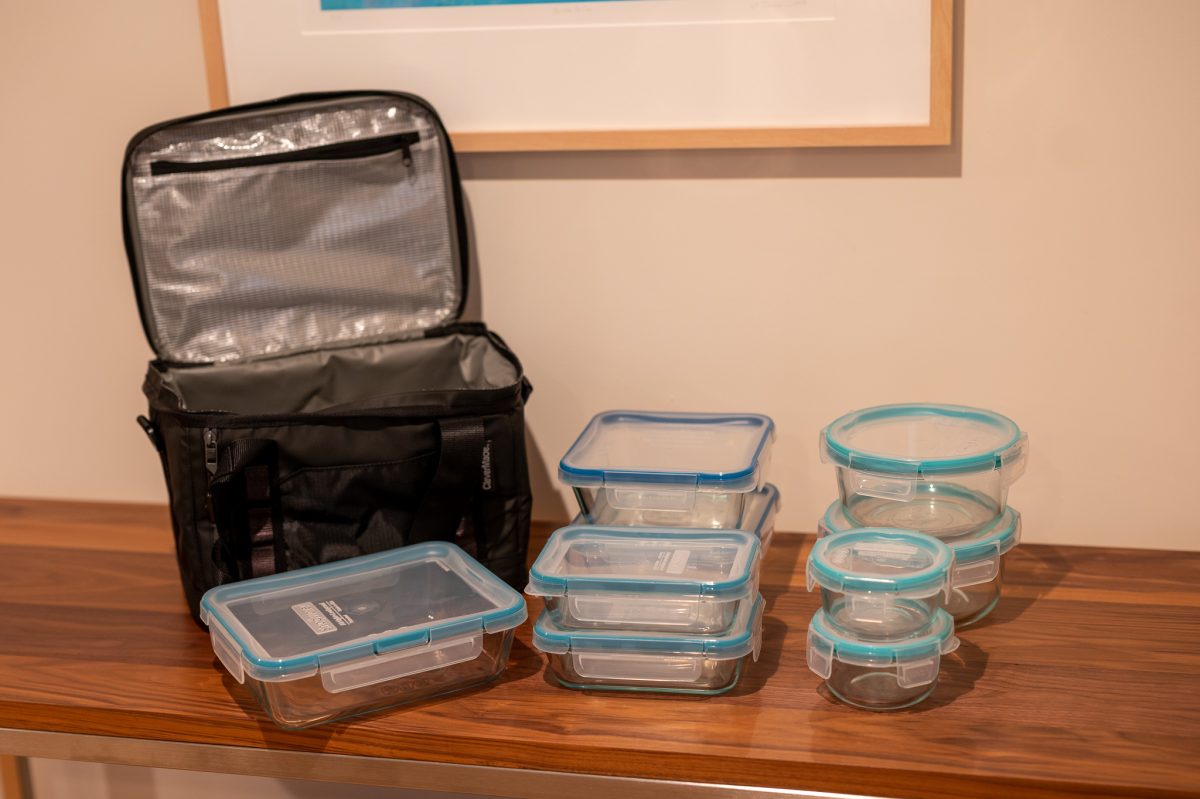
An important thing to keep in mind is that if you are only able to utilize this method some of the time, you’re still making a way larger impact than you realize. The problem I’ve struggled with in trying to make lifestyle more environmentally friendly changes is forming habits that are still convenient in my daily life.
By using glass reusable containers, I discovered that I am able to save myself massive amounts of effort, space, and time.
Here’s how it typically works for me. I bring a clean, empty container with me when dining out. It’s kept in an insulated carrying case, which offers insulation for food that should be kept hot or cold, and padding for the glass if it gets banged around. It also looks nice and blends in nicely when at white-linen restaurants.
At the end of the meal, I take out the container and box it myself. Due to food safety laws, kitchens will never take your containers into their own kitchen, but they generally will not care if you box your own with your own container. I then tuck it away in my insulated bag and get the check. Either the server notices and asks questions out of curiosity, or simply thinks I ate everything.
Once home, I remove the container from its bag and put it in the fridge. I wipe down the bag if it needs it and put it next to the door or back in the car for my next trip. I have several, so I always try to keep them in the car and ready to go at any given time.
Here’s my favorite part of using these glass containers. When I’m ready for leftovers, I can stick them in either the microwave or oven and eat directly from them. This is one less dish to wash, and I don’t have to transfer out of some annoying container dripping sticky condensation everywhere.
The dish is reheated, I eat out of it, and then I stick it in the dishwasher. Once washed, I can put it back in the queue to go into my vehicle.
This habit is fairly easy to get used to. The hardest part is going from getting the to-go container and bringing it into the restaurant with you. Planning for leftovers in advance sometimes feels a little silly. I’d imagine if you’re already carrying a purse or other bag, the extra isn’t ideal, but it’s probably better than managing a plastic bag or something else at the end of your meal.
Eco-Friendly Product Choices for Dining Out
Vibe Check: Looking good while being sustainable
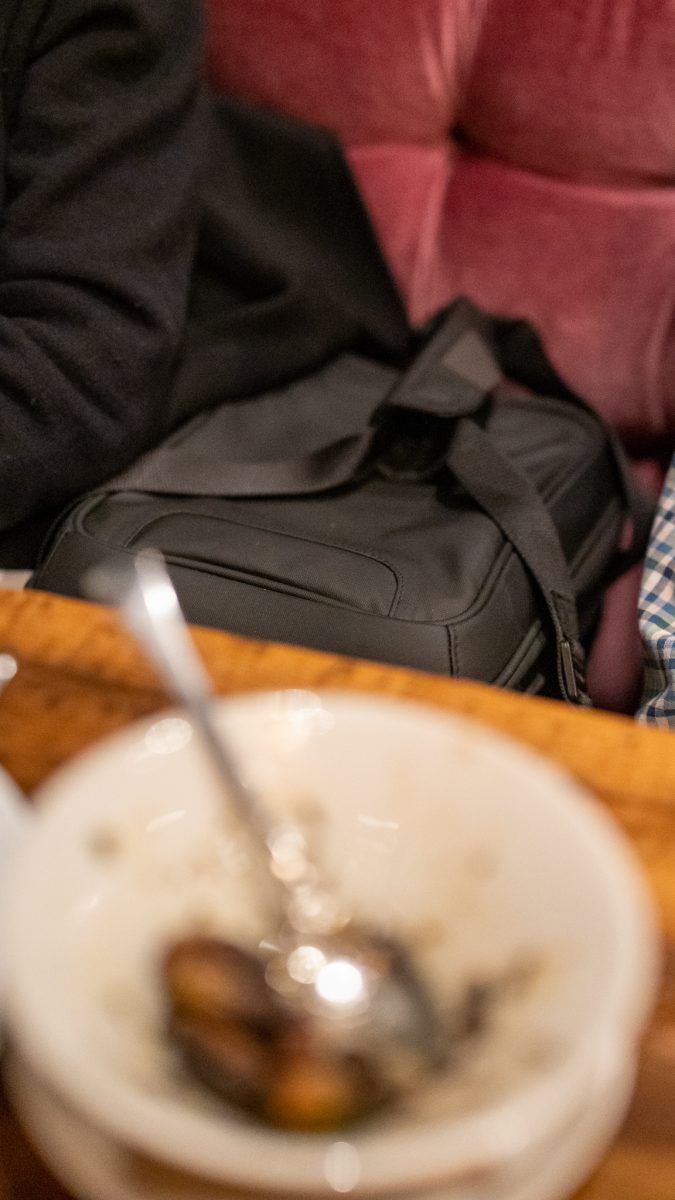
I dine out at really nice restaurants and bars quite often. The last thing I want to do is bring some ugly spaghetti sauce-stained containers with me. I’m already acting a bit out of the norm by bringing containers from home, so I don’t want to attract any negative attention. These sleek containers and their carrying case allow me to be somewhat discreet while being sustainable.
Planning out exactly what you’ll put your food in and carrying it around provides a lot of extra freedom you don’t realize you were missing. Creating and having your own personalized system speeds up a lot of things and saves so much time. An extra benefit of foregoing to-go containers is that my garbage has started smelling a lot less.
The Test: A Successful Night Out
The first time I put this into practice was a night out at Hawks Provisions, a fairly nice restaurant here in Sacramento. I had three containers in my carrier – two squares and one round – as I hadn’t anticipated my order or how many leftovers there would be.

At the end of the meal, I asked the server if he or the restaurant would mind if I used my own containers. He said it wasn’t a problem at all. As soon as I started closing the lid on the first container, someone came over to the table and commended my efforts to bring my own containers.
I asked the server if he had seen much of this before. He said it was pretty rare, but he remembered it well, as it is an unusual thing. He continued telling me he wanted to, but it was hard to plan ahead, and remember to bring them. Plus, bringing containers from home isn’t exactly a socially acceptable practice yet.
Unprompted, the server mentioned the practicality of it and parroted some of the points I previously mentioned. Hearing this gave me hope that I was indeed on the right track and that this could become a normal practice for all those who wish to be more environmentally conscious.
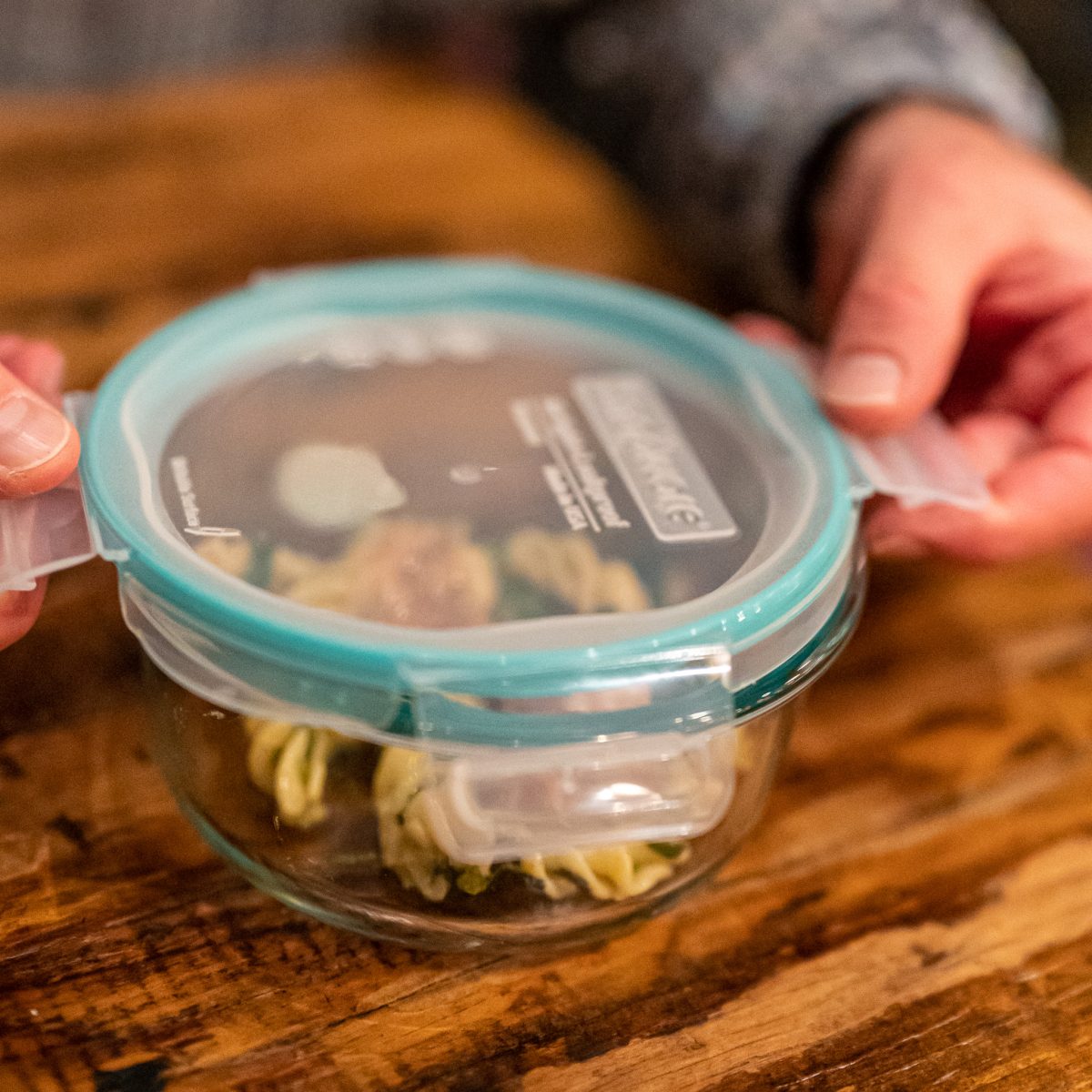
I left the restaurant really happy with this test run and felt motivated to continue to bring my own containers when dining out in the future.
Fine Dining Sustainability Success
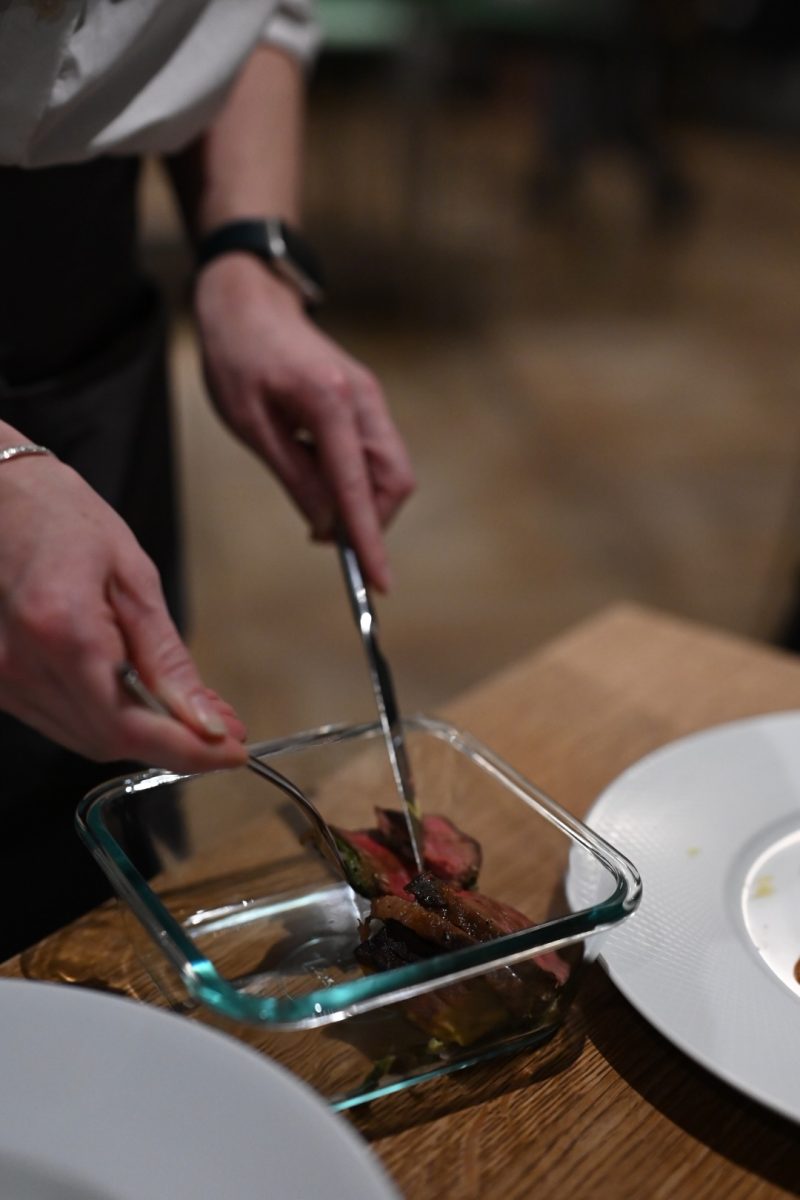
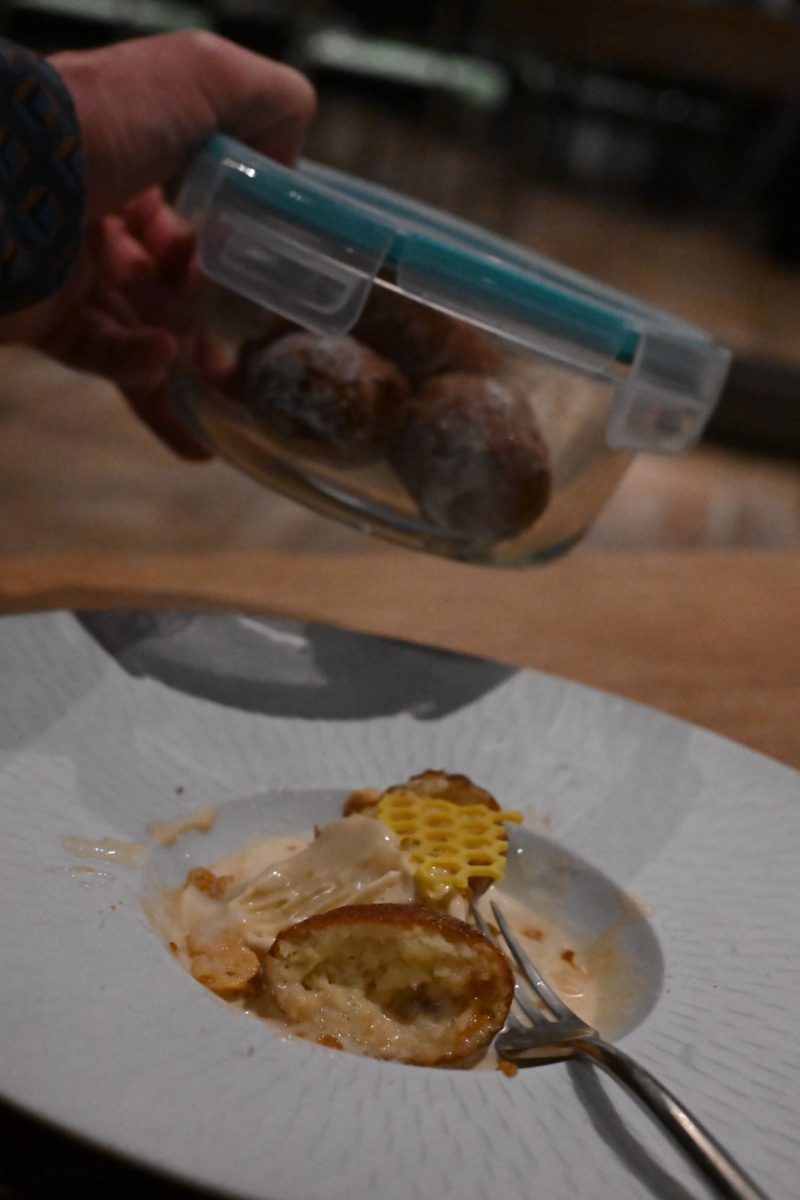
I brought my cooler bag and glass containers to a very nice restaurant to gauge how it would go. I wasn’t sure if there would be leftovers for this five-course prix fixe menu. I brought a small assortment of sizes in the bag, ready to go. As it turns out, these worked really well for some of the heavier dishes, and the server seemed delighted to use them. It was a seamless experience and made reheating the different dishes, from donuts to steak a breeze.
- About the Author
- Latest Posts
I strive to paint vivid landscapes with my words, bringing the magic of far-off lands and enchanting aromas to life for my readers. Combine passion for exploration and the art of gastronomy in an unending ode to the senses. When I’m not traversing the globe, I find solace in the earth beneath my fingertips, tending to my garden and working on projects around my verdant oasis. MK Library serves as a beacon, guiding fellow travelers and homebodies alike to embrace sustainability, nurturing both our planet and our souls with purpose. Full Bio.

